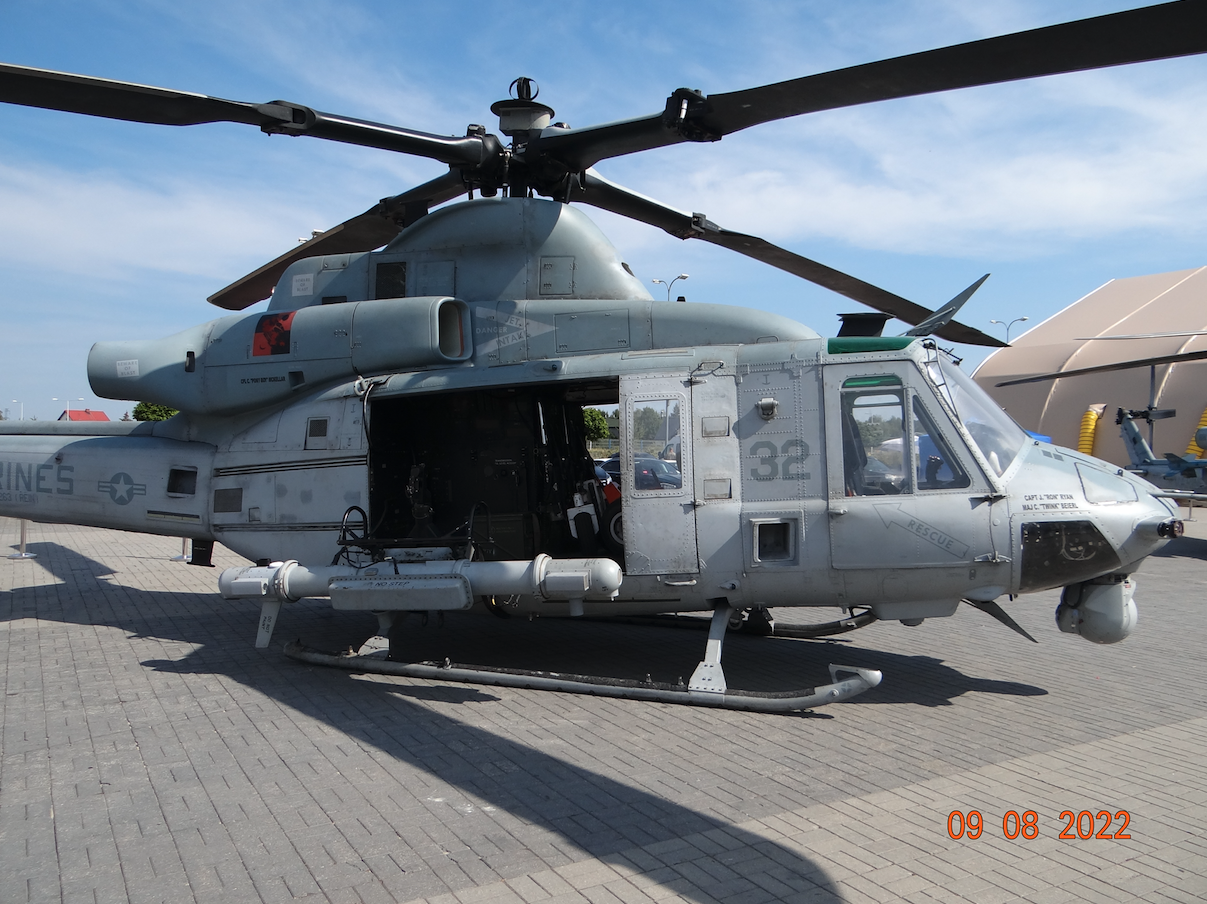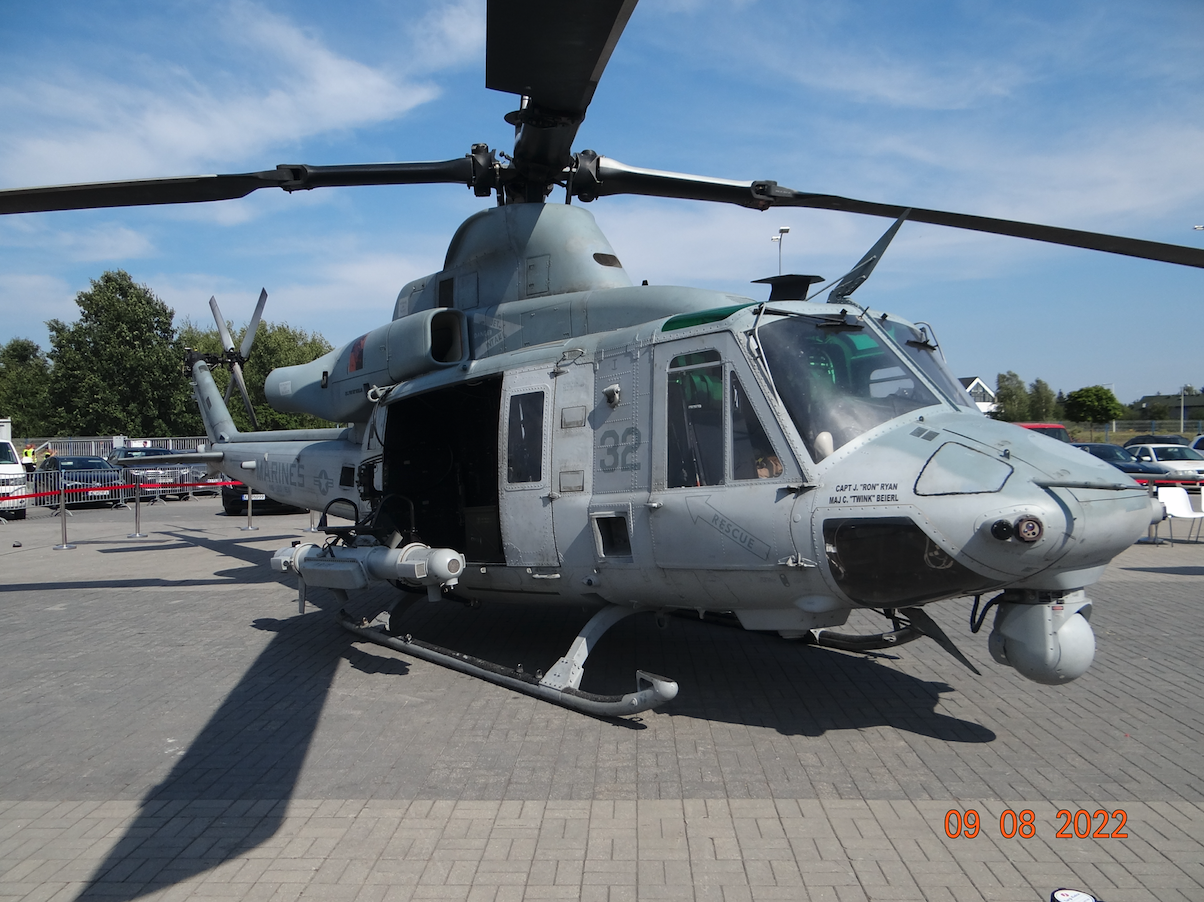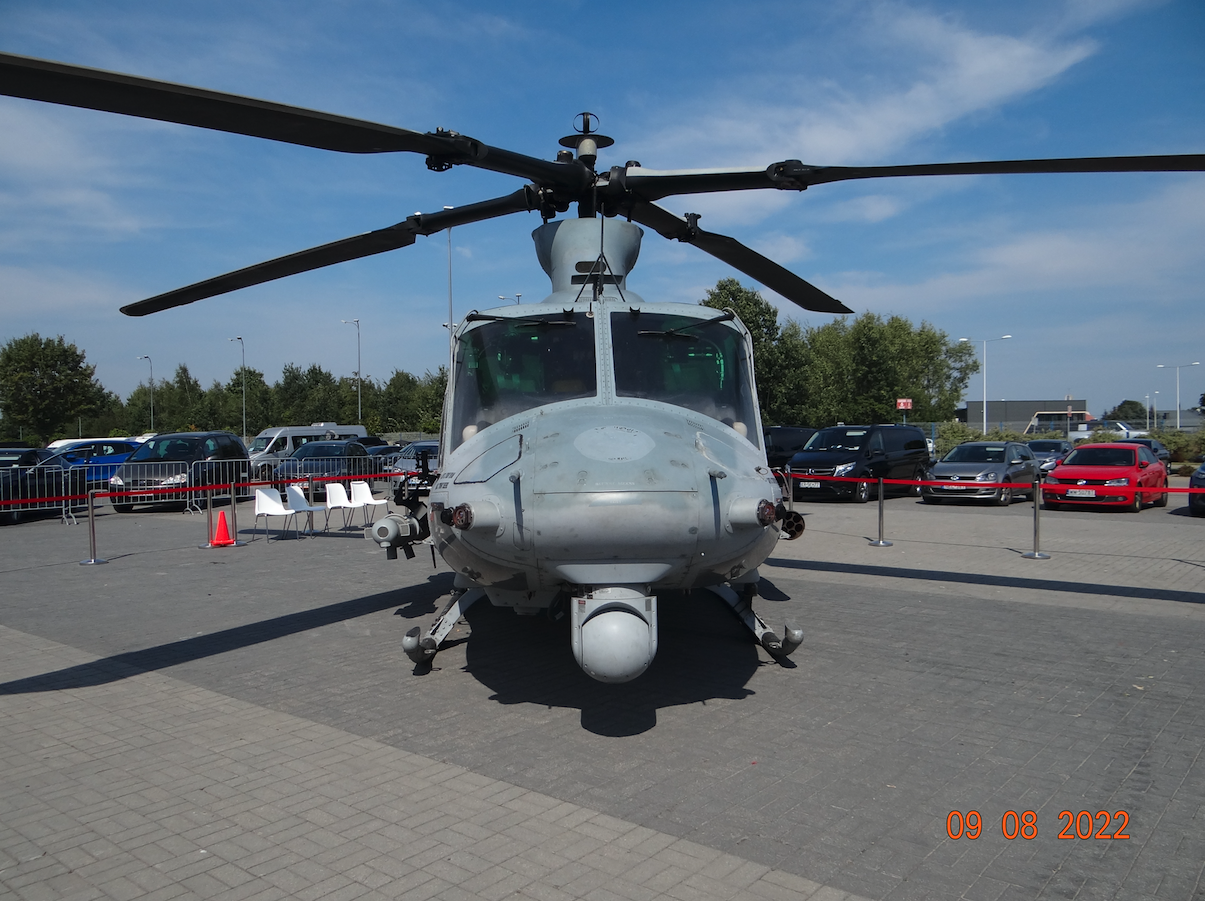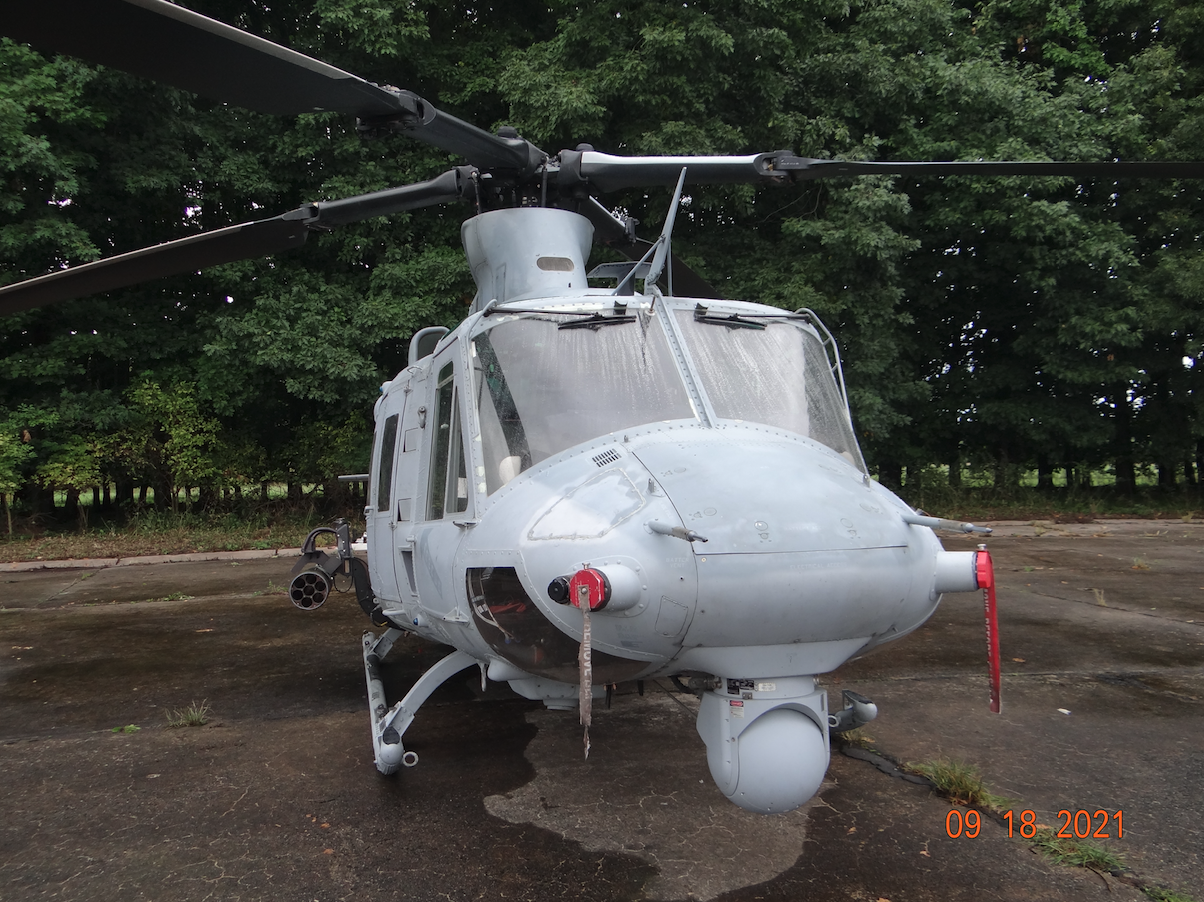Kraków 2022-09-14
Wojskowy śmigłowiec wielozadaniowy Bell UH-1 Y Venom.
Bell UH-1 Y Venom to jest kolejne wcielenie legendarnego śmigłowca Huey, który tak dobrze spisał się podczas wojny w Wietnamie. Bell UH-1 Y Venom wsród żołnierzy amerykańskich jest nazywany Super Huey. Nie bez przyczyny, bo to jest ta sama rodzina. Śmigłowiec jest nazywany także nazywany „Yankee”, na podstawie wymowy jego wariantu litery alfabetu fonetycznego NATO. "Venom" w języku angielskim oznacza "Jad".
Bell UH-1 Y Venom to jest dwusilnikowy, średniej wielkości śmigłowiec wielozadaniowy, zbudowany przez firmę Bell Helicopter w ramach programu modernizacji H-1 Korpusu Piechoty Morskiej Stanów Zjednoczonych. Śmigłowiec pierwszy lot wykonała w dniu 20 grudnia 2001 roku, czyli w rok po pierwszym locie śmigłowca szturmowego Bell AH-1 Z Viper, z którym łączy go wiele.
Śmigłowce Bell AH-1 Z Viper i Bell UH-1 Y Venom mają wiele elementów wspólnych, co obniża koszty produkcji i użytkowania. Oba śmigłowce mają wspólny wysięgnik ogonowy, silniki, układu wirnika, sterowania, awioniki, oprogramowania i obsługi. W sumie 84 % elementów obu śmigłowców są identyczne.
Długo rozważano, czy śmigłowiec Bell UH-1 Y Venom wprowadzić do uzbrojenia USMC. W 2005 roku, zdecydowano się na produkcję seryjną, aby nowy śmigłowiec zastąpił starzejącą się flotę USMC lekkich śmigłowców wielozadaniowych UH-1N Twin Huey, wprowadzonych po raz pierwszy na początku 70-lat XX wieku. Dostawy śmigłowców Bell UH-1 Y Venom dla USMC trwały w okresie 2008 – 2018.
Zbudowano 160 egzemplarzy i śmigłowiec nadal jest produkowany dla odbiorców zagranicznych. Z biegiem lat śmigłowiec był modernizowany. Zamontowano nową awionikę i radiostacje, nowoczesne karabiny maszynowe montowane w oknach burtowych. Zamontowano: głowicę opto-elektroniczną, system podczerwieni, glass cockpit. Śmigłowiec mimo zwiększonej masy zwiększył prędkość maksymalną do 300 km / h. Zwiększono sprawność silników.
W porównaniu do starszych śmigłowców rodziny Huey, wirnik dwułopatowy zastąpiono cztero-łopatowym. Zastosowano nowe łopaty wirnika nośnego, całkowicie wykonanie z kompozytów. Łopata wirnika nośnego wytrzymuje trafienie pociskiem kalibru 23 mm. Zmienie uległo śmigło ogonowe, które w nowym śmigłowcu jest czterołopatowy i wykonanie z kompozytu. Poprzednio było dwułopatowe.
W celu zwiększenia pojemności ładowni wydłużono kadłub śmigłowca o 21 cali (0,530 m). Segment wstawiono przed głównymi drzwiami do ładowni. W porównaniu do UH-1 N (oblatany w 1969 roku), model UH-1 Y ma zwiększoną ładowność, o 50% większy zasięg, mniejsze wibracje i wyższą prędkość przelotową.
W dniu 11 października 2017 roku, Agencja Współpracy Obronnej i Bezpieczeństwa powiadomiła Kongres Stanów Zjednoczonych o sprzedaży 12 egzemplarzy UH-1 Y Venom za cenę 575 mln USD. W grudniu 2019 roku, zatwierdzono zamówienie na 8 śmigłowców Bell UH-1 Y Venom dla Czech – Vzdušné Síly Armády České Republiky, razem z 4 śmigłowcami Bell AH-1 Z Viper. W lipcu 2021 roku, firma Bell poinformowała, że na linii montażowej jest pierwszy śmigłowiec UH-1 Y Venom dla Czech.
Obecnie (2022 rok) Polskie Siły Zbrojne rozważają kupno śmigłowców bojowych Bell AH-1 Z Viper oraz śmigłowców wielozadaniowych Bell UH-1 Y Venom.
Silniki Bell UH-1 Y Venom:
Śmigłowiec napędzają dwa silniki General Electric T700-GE-401C turboshaft, o mocy 2 x 1,828 shp (2 x 1,363 kW).
Dane T-T Bell UH-1 Y Venom:
Załoga 2 pilotów, 10 uzbrojonych żołnierzy. Długość 58 ft 4 in (17.78 m). Wysokość 14 ft 7 in (4.45 m). Masa własna 11,840 lb (5,371 kg). Masa całkowita 18,500 lb (8,391 kg). Średnica wirnika nośnego 48 ft 10 in (14.88 m). Prędkość maksymalna 164 kn (189 mph, 304 km/h). Prędkość przelotowa 158 kn (182 mph, 293 km/h). Zasięg bojowy 130 nmi (150 mi, 240 km). Czas lotu 3 godziny 18 minut. Pułap praktyczny 20,000 ft (6,100 m). Prędkość wznoszenia 2,520 ft/min (12.8 m/s).
Opracował Karol Placha Hetman




